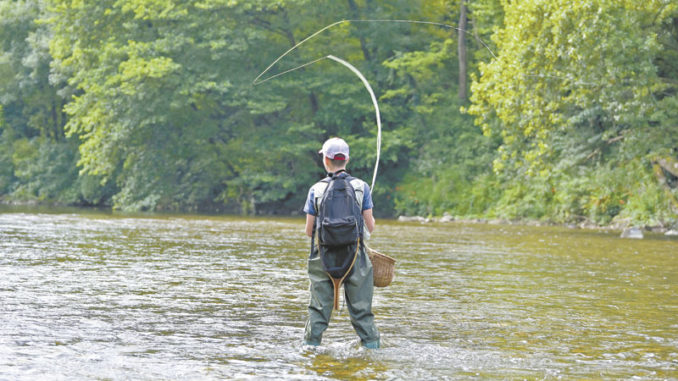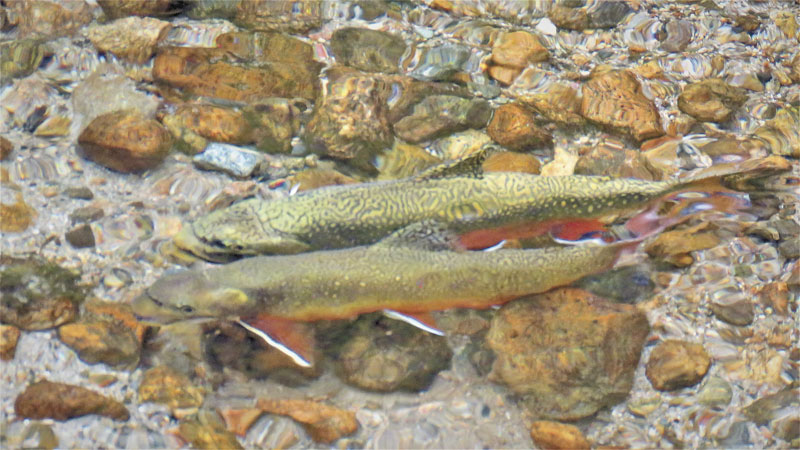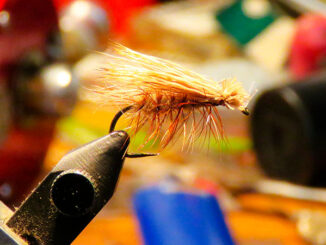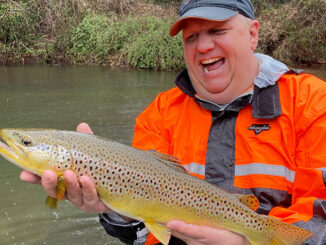
The right trout gear makes a big difference
The starting point for anyone interested in learning the nuances of fly casting for trout requires the proper gear for the job. The rod must be suitable for the fish being pursued. It also means selecting a line that is right for the job.
For beginners, a five-weight fly rod with a weight forward fly line is a good choice. An 81/2-foot rod would be a good selection. As you advance, a lighter weight or shorter rod may provide a greater challenge and be more suitable. But the 81/2-foot, five-weight is a good starting point.
In the early days of fly casting, most fly lines used were level lines. They were the same diameter and weight throughout the length. Anglers have plenty of choices now.

Modern fly line configurations for trout:
- Weight forward – Heavier and larger diameter near the tip.
- Double taper – Suitable for small waters and good for roll casts.
- Level – Least desirable for most uses.
- Specialty tapers
Finesse it
The mechanics of fly casting is fairly simple. The rod is flexible and stores energy that the caster must utilize to be efficient. It is similar to a bow in archery. As it flexes, energy is stored, but that energy must be properly channeled to result in a successful cast.
In spinning or bait casting, the weight of the lure carries the line to the termination point of the cast. In fly fishing, the line carries a very light lure to that same point. Fly casting generally takes more finesse and good timing than the other two.
Fly casting for warm water species is more forgiving than casting for mountain trout. However, the better caster will excel in both areas. Warm water species are more often pursued on open water where technical casting is not usually required. But the ability to cast under overhanging limbs, cast into the wind, or deliver the fly delicately is a plus.
Fly casting is about delivering the fly in a manner that simulates an insect. Several casts are essential to fly rodding.
Useful casts:
- False cast – Use this cast to learn the rhythm of fly casting. Do not use this cast excessively. Fish can’t bite a fly that is not on the water.
- Upstream mend – Use to provide “drag-free” drifts in moving water.
- Roll cast – Useful in tight conditions..
- Steeple cast – Use when low brush is behind caster.
- Reach cast – Similar to upstream mend, but performed while the line is in the air.
- Relocation cast – Applies when the re-location of the fly is desired and requires no false casting.
- Roll snap pick-up – Execute a roll cast and perform a back-cast while the fly is in the air.
- Double haul cast – Excellent for casting into a heavy wind. Stripping the line toward the reel as the fly line turns over during the back cast and the forward cast accelerates the fly line speed, thereby increasing distance and control of the fly.
Load the rod
Before you start to cast, be sure that you have a length of fly line out of the rod tip that is approximately equal to the length of the rod. This will serve to load the rod and take advantage of the previously mentioned energy as the rod flexes.
During the initial cast, you should direct the fly toward a spot about 3 feet above the water. This will allow the fly to settle onto the water delicately, minimizing disturbance so the fish will not be startled.
Fishing for cold water species in running water creates challenges for casting that anglers must master. The goal is to accomplish a “dead drift.”
With the exception of caddis flies that may skitter across the water, most flies drift freely on the water without creating ripples or drag.
A good instructional resource for new fly casters would be the late Lefty Kreh’s book, “Fly Casting Fundamentals.”




Be the first to comment